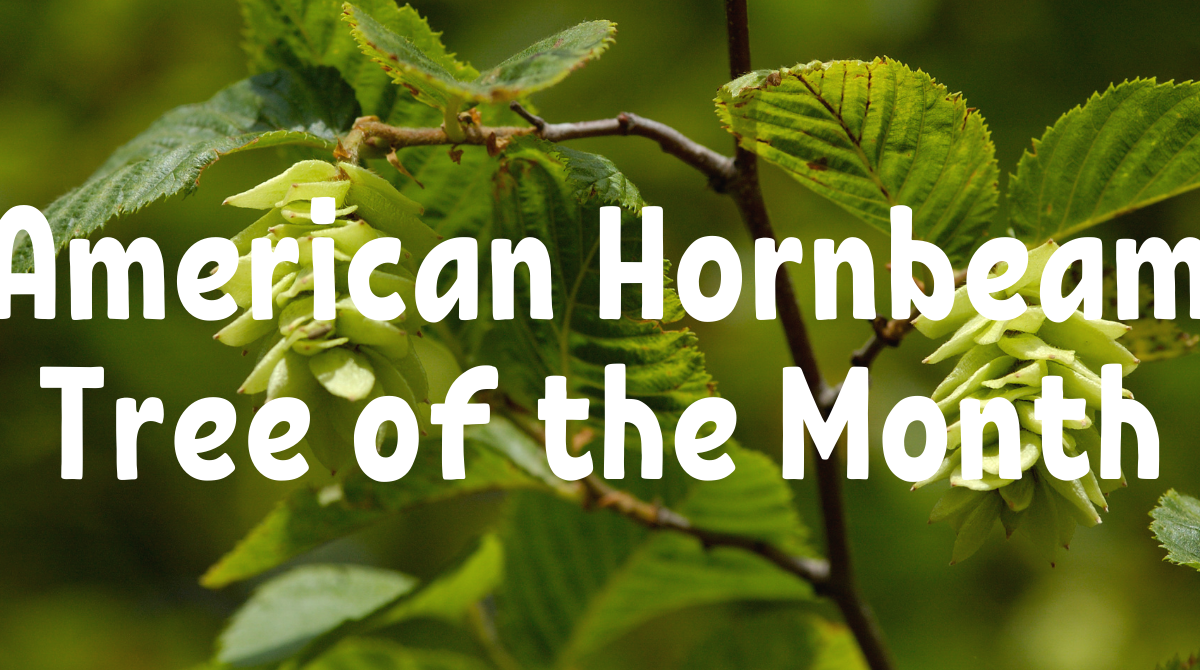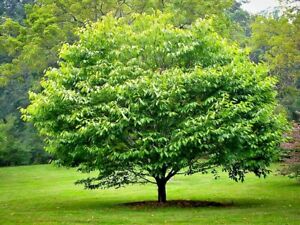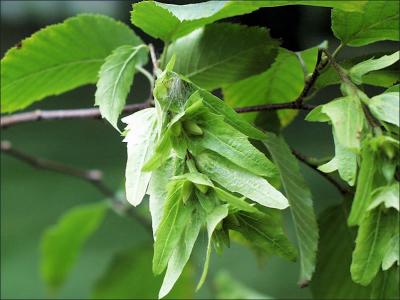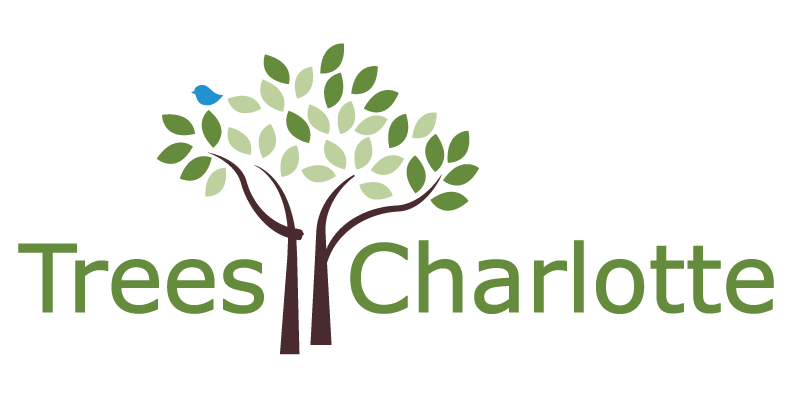Tree of March 2021: American Hornbeam

Our third tree of the month is none other than the American Hornbeam! The American Hornbeam is a deciduous, slow-growing, medium maturing tree native to North Carolina. It is part of the birch family and is a great way to bring foliage to shadier spots that most trees could not tolerate. They have dense canopy and a pleasing, symmetrical shape. The nuts grow on distinctive bracts that are unique to this tree.

Size at maturity:
Height: 25-50 feet
Crown Spread: 15-25 feet
Shape:
- Ovule, symmetrical crown
Leaves:
- Broad, simple leaves with double toothed margins
- Highly dense crown
- Orange, red, and yellow fall color
Fruit:
- Produces small nuts that can be found in clusters on hanging stalks

Sun:
- Part shade to full shade
Soil:
- Likes moist, fertile soils. Can tolerate somewhat wetter conditions, not drought tolerant.
Growth:
- Slow
Natural Range:
The American Hornbeam is native to the eastern United States. They can be found everywhere from Maine to Florida, and as far west as eastern Texas.
Use:
This tree is often planted in shady spots where most other species of tree would struggle, like under existing canopy or next to tall buildings. Hornbeams can be planted anywhere from naturalized areas to cityscapes. You can find some near the Southend rail trail.
Environmental/Wildlife Benefits:
The American hornbeam produces seeds that are eaten by a variety of birds, including the yellow-rumped warbler.
Fun fact:
The American Hornbeam is known for its extremely dense, hard, and heavy wood. It is nicknamed “ironwood” for this feature. It’s so dense that it’s often too difficult to work with.





